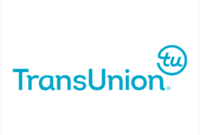Speakers
3 speakers
Date & Time
Jul 13, 2023 2:00 p.m. ET
Webinar
Agency watchdogs have flagged tens of billions of dollars in suspected fraud from COVID-19 emergency programs, and are still uncovering the full scope of pandemic fraud.
In response to unprecedented levels of pandemic spending – and the discovery of fraudsters taking advantage of those programs – the Department of Veterans Affairs’ Office of Inspector General (VA OIG) is taking a new, data-driven approach to investigate fraud.
James Ross, VA OIG’s principal deputy inspector general for investigations, said VA OIG’s Office of Investigations recently launched its own dedicated Health Care Fraud Division. The division brings together investigators to look for vulnerabilities in VA’s health care programs and flag indictors of fraud.
“The first step is they can take a holistic look. They can look at the program’s rules [and] determine is VA even vulnerable to fraud here. And if they are, then they can use data analytics and subject-matter expertise to try to breathe life into potential cases,” Ross said.
A special agent in charge leads the division. Staff includes data scientists and nurse consultants.
“Our investigators are extremely adept at following the evidence and building a case for prosecution. But they wouldn’t be able to do that effectively in this case without partnering with our data analytics group to identify potential outliers,” Ross said.
Ross said the new division allows VA OIG to stay on top of VA’s increased health care spending, as well as the department shifting more of its spending to outside community care.
“VA did previously have some programs that allowed it to partner with the community for the delivery of health care, but most of it by and large was done directly through its hospital system. Now that’s completely shifted. The community is very much in play and very much a necessary partner with VA in that front.”
The Office of Investigations also partners with VA OIG’s Office of Data and Analytics to identify red flags in health care spending data.
“They’re able to, on a routine basis, liaison with data professionals, data scientists, statisticians, folks who are experts at combing through big data, correlating it, manipulating it in a way that we can actually use it,” Ross said.
The Office of Data and Analytics also builds data visualization models for investigators identify potential leads and indictors of fraud
Fraud comes in many forms at the VA. The IG’s office oversees a range of fraud cases, including health care fraud, identity theft, pension benefits fraud and defrauding VA’s home loan guarantee program.
“Given VA’s responsibilities and its programs, it pays out a lot of money every year in health care services, as well as monetary benefits — which means we see a lot of fraud,” Ross said.
VA OIG employs about 1,100 staff to oversee the VA, which has a workforce of more than 400,000 employees.
“The size difference is significant, as you can imagine. Therefore, we have to set priorities. We do that by, first of all, looking at where VA spends the most money. That’s probably the single-biggest factor that we can take into account,” Ross said.
To prioritize its spending oversight, Ross said VA OIG’s Office of Investigations also looks at which programs are at the greatest risk for exploitation.
“Some might lend themselves to being more susceptible than others. But also, what kind of intelligence are we getting from our partners in the community, in terms of schemes and the types of similar government programs that are being defrauded. In other words, what’s going on right now, elsewhere in the industry?” Ross said.
Ross said VA OIG also prioritizes oversight into programs based on feedback from veterans.
Because fraudsters often target veterans to obtain their personally identifiable information, VA OIG sends out fraud alert bulletins to make veterans aware of emerging fraud schemes.
Over the past year, VA OIG notified veterans about VA being billed for home health care that veteran didn’t receive. The IG office also released a joint bulletin with the FBI on medical identity theft claims.
Investigating and preventing fraud with data
Greg Schlichter, the director of research and consulting for public sector at TransUnion, said a lack of robust identity proofing in pandemic-era programs contributed a surge in fraud.
With agencies prioritizing payment speed at the height of the pandemic, applicants, in many cases, could self-certify their eligibility for benefit programs.
“We’re seeing now is a little bit of friction up front could have gone a long way in preventing a lot of the fraud we’re seeing,” Schlichter said. “If you think about unemployment insurance fraud, there’s always been some baseline level of that happening. But if you look at the spike in UI fraud that happened once the expanded benefits became available, that’s what I’m talking about.”
Agencies, out of necessity during the pandemic, allowed the public to apply for many benefits programs online – making it easier for individuals and fraudsters to receive benefits.
Schlichter said that shift to online benefits requires agencies to roll out more rigorous identify verification tools.
“You can employ much better, much more robust identity proofing. You can analyze risk associated with specific devices or specific behaviors. You can incorporate a wealth of data assets, build very segmented, targeted fraud risk models,” he said. And you can do all of this in a way that is nearly invisible to the end user. It all happens behind the scenes. Maybe it adds a couple extra milliseconds on the total transaction time.”
Agencies rely on data to identify anomalous behavior, such as when an applicant signs up for benefits using a device in a location far away from where they live or work.
“Has that [device] ever been associated with the person who’s applying for benefits? Or is the device currently located in an area we would expect this person to realistically be?” Schlichter said.
Agencies also closely monitor how applicants interact with an online application form, as another possible indicator of fraud.
“Did it look like the form was actually filled out by a human, or was it maybe copy-and-pasted a bunch? Maybe it was filled out by a bot. Maybe there’s a phone that sent 20 requests in one minute. And that’s obviously, I would think, a pretty high indicator of fraud,” Schlichter said.
Agencies collect a wealth of data that’s valuable for identifying instances of fraud, but that data is often collected for specific purposes and siloed from other data sets.
“The real impact of data comes from complementing what you already have with other data sources, so you can create a multifaceted view of a particular person, or a particular enrollment attempt or sign on event.”
As agencies develop stronger identify proofing solutions, Schlichter said they must also ensure vulnerable populations – such as veterans experiencing homelessness – are able to apply for benefits without having common credentials like a driver’s license.
“If you’re relying only on DMV records, or voter records, car ownership, things like that, that’s not going to cover everyone — and especially not going to cover portions of vulnerable populations. And that’s where alternative data assets come to bear,” Schlichter said.
Those alternative data assets, he added, include payday loans, utility bills or gym memberships, which can help verify someone’s identity when applying for benefits.
As fraudsters become more adept at impersonating government entities, agencies also need to take stronger steps to build trust when they’re reaching out to the public.
“We’ve all developed a stronger scam radar, if I’m being contacted by somebody, and they’re saying they’re from the government, and they want to talk to me about some program or service, I’m immediately thinking I’m getting scammed,” Schlichter said. “But there are certain things that agencies can do to begin rebuilding that trust, or to at least get by people’s scam radar. Simple things to like, when you call somebody does it actually say the name of your agency? Or is it just a random number? If it’s a random number, nobody’s picking up.”
Learning objectives:
- Fraud investigation at the VA OIG
- VA OIG data protection strategy
- Industry analysis
Complimentary Registration
Please register using the form on this page or call (202) 895-5023.
Speakers
James Ross
Principal Deputy Inspector General for Investigations
VA Office of Inspector General

Greg Schlichter
Director of Research and Consulting, Public Sector
TransUnion

Jory Heckman
Reporter
Federal News Network
Please register using the form on this page.
Have questions or need help? Visit our Q&A page for answers to common questions or to reach a member of our team.

